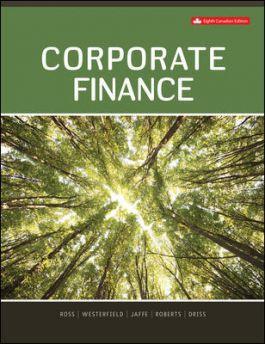Question
1) Which of the following is a necessary condition of a perfect market? a. No risk b. No inflation c. No taxes d. All of
1) Which of the following is a necessary condition of a perfect market?
a. No risk
b. No inflation
c. No taxes
d. All of the above are necessary conditions for a market to be perfect
2) The beta factor is an indicator of the degree to which the stock reacts to the changes in the returns of the market portfolio. True or false?
a. True
b. False
3) How much must you deposit in an account today in order to have $1,000 in your account at the end of two years if you can earn 6.5% per year on your money?Round your answer to the nearest dollar
a. $939
b. $885
c. $882
d. $914
4) Which of the following terms refers to a decrease in price levels?
a. inflation
b. hyperinflation
c. disinflation
d. deflation
5) You paid $713 last year for a zero-coupon bond that promised to pay you $1,000 at the end of 5 years.Rather than hold it for the remaining four years, you have decided to sell it today.The prevailing effective annual interest rate is 9%.To the nearest dollar, what price do you expect to get for your bond?
a. $763
b. $777
c. $708
d. This cannot be determined with the information provided.
6) Suppose you deposit $1,000 today in an account that pays interest at an annual rate of 5%.What will be the balance in the account at the end of two years if you withdraw only the interest paid on the interest at that time?
a. $1,000
b. $1,050
c. $1,100
d. $1,003
7) Suppose you deposit $1,000 today in an account that pays 5% interest at the end of each year.If you make no withdrawals, what is the balance in your account at the end of four years?Round your answer to the nearest dollar.
a. $1,050
b. $1,200
c. $1,216
d. $1,020
8) Which of the following loan terms would result in the lowest annual cost?
a. 4%, compounded daily
b. 4%, compounded monthly
c. 4%, compounded quarterly
d. 4%, compounded annually
9) An investment earned an average return of 20% per year.During the investment period, the real interest rate averaged 1.8% a year.To the nearest tenth of a percent, the implied average annual inflation rate was
a. 1.8%
b. 1.2%
c. 22.2%
d. 17.9%
10) If you had deposited $1.00 in a bank account at an annual rate of 2% at the beginning of 1929, how much would you have in the account at the end of 2008, assuming the interest rate remained constant?
a. $81.60
b. $160.00
c. $4.88
d. $47.79
Step by Step Solution
There are 3 Steps involved in it
Step: 1

Get Instant Access to Expert-Tailored Solutions
See step-by-step solutions with expert insights and AI powered tools for academic success
Step: 2

Step: 3

Ace Your Homework with AI
Get the answers you need in no time with our AI-driven, step-by-step assistance
Get Started


